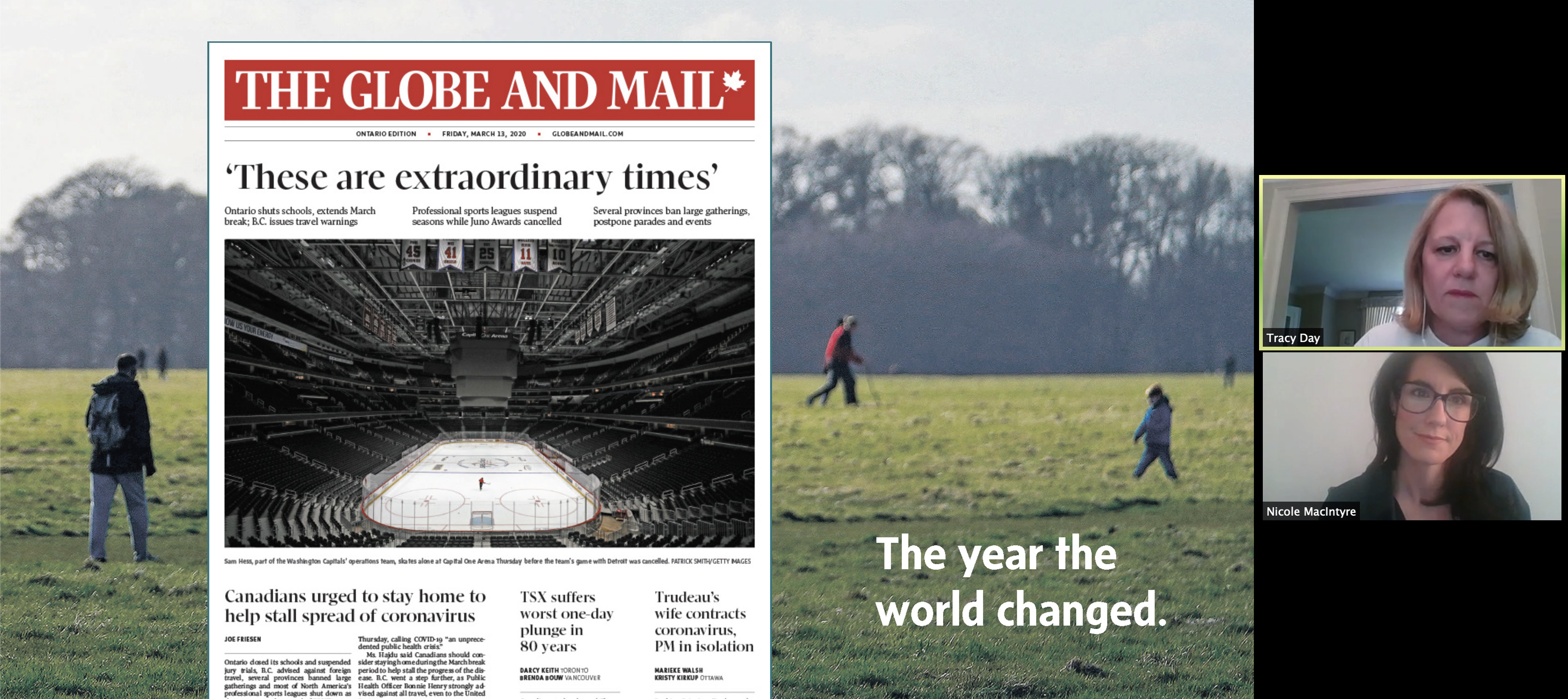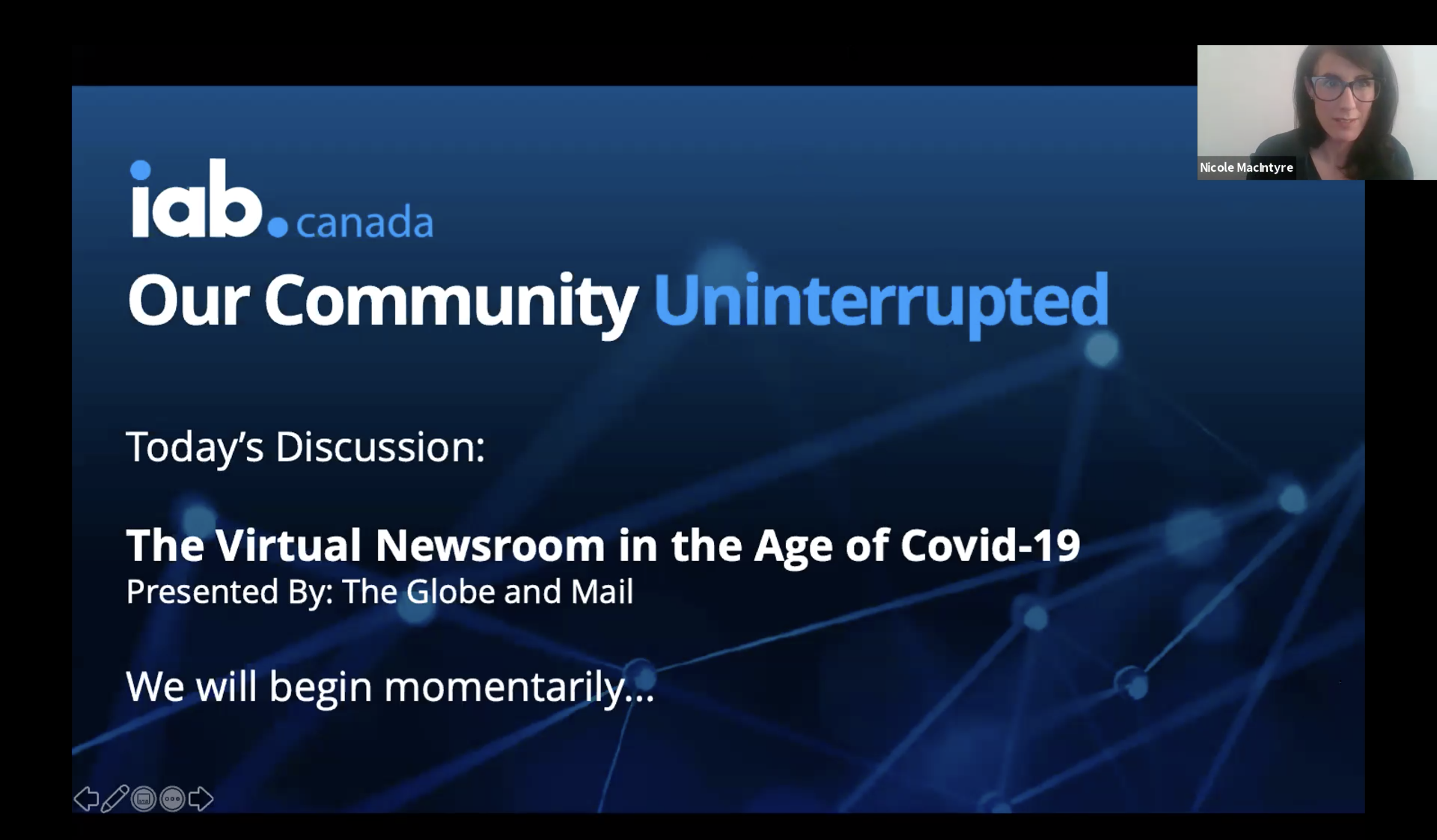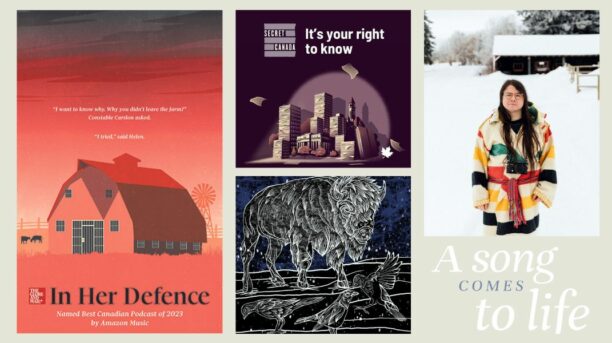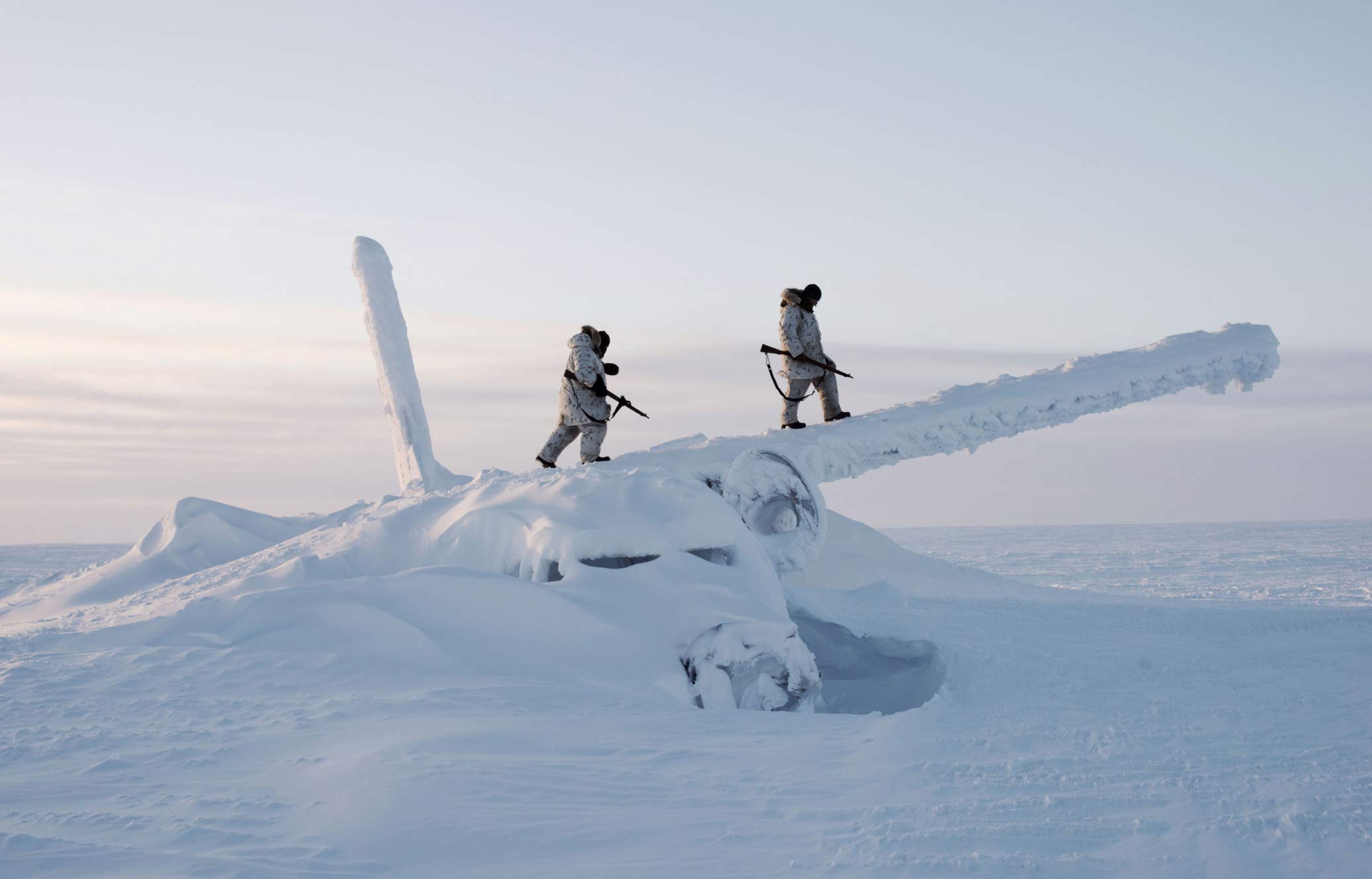What’s it like to be a journalist covering a global pandemic while confined to the bounds of your home office? How do you find the ideal balance between delivering the 24/7 essential news while also providing audiences with mood-enhancing escapes, and advice to plan for the future, post-pandemic?
Tracy Day, Managing Director of Creative Studio and Ad Innovation, and Nicole MacIntyre, Deputy National Editor recently sat down as a part of IAB Canada’s Community Uninterrupted series for a behind-the-scenes look at journalism in the age of COVID-19.
Some responses have been edited for brevity and clarity.

What was happening in the newsroom when you realized the pandemic was going to be huge?
Nicole MacIntyre (NM): “For so many of us, it was something that was slowly building. We had Nathan VanderKlippe in China, who was reporting on what was happening there and Eric Reguly in Italy. We were all watching these things, and those conversations were building day-by-day.
On March 10th, Carly Weeks, one of our health reporters, called me very late at night… to say that she had just learned that someone had tested positive at a large mining conference in Toronto (PDAC) with 23,000 people there. We frantically pulled that story together. I think it went out on our website at midnight.
In the morning, we woke up and the numbers were off the charts for people reading that. We also started to think that we had reporters at that conference and what does that mean? We came into the newsroom that day and pulled together the group of health reporters and it started feeling very real.
That’s the meeting in which Andre Picard decided that it was time to write the column, ‘Shut it down: It’s time for Canada to get serious about social distancing‘. We as editors read columns before they go up and I remember reading it, and taking a moment and stepping into a private office at The Globe and having a zone out, that life is about to change dramatically.
Later that night that column, which had a huge impact, was published. It was the night that Donald Trump announced he was shutting down flights from Europe. That’s the night the NBA shut down. That’s the night that Tom Hanks tested positive for COVID.
And really, I feel like the world changed that day, and the newsroom got an early look at that, and it has never been the same since.”
What’s been the biggest challenge?
NM: “Newsrooms and journalists are well-trained in responding quickly to extraordinary events. Newsrooms are used to going, “Okay, something very big has happened, and we need to go at it”. One thing I said about this… it’s like covering a house fire when you’re inside the burning house.
It’s not just us covering a story that’s outside… everyone is living it. So you have reporters who are getting sick. You have reporters who had loved ones trapped in other parts of the world, people who have young children at home. We’ve been asking people to cover a story they’re living and that is really difficult. I’m so impressed – they’ve been such pros and everyone has been juggling it. But it’s been a lot for people. We’re asking people to, on a highly sustained level, to bring an emergency-level of newsroom reporting, at a time that they’re trying to balance a lot of personal challenges as well.”
How do you balance the weight of intense news surrounding this virus with the need for distraction and good news for the readers?
NM: “We try to remember, all the time, that we’re living this too. We need those stories too. We need to see the good things that are happening. And a lot of really good things have happened out of this. We’re remembering that, as much as people need to know the latest on what’s the latest with the CERB program, or what has happened with our borders, they also want to know “how do I teach my kids how to do fractions at home?” “How do I maintain a connection with my love one that I can’t go and see?” We’ve been trying very hard to make sure we have stories that reflect these feelings too. I said that to the reporters this week, we need to reflect how people feel.”
“Sophi, [our automation and predictive paywall engine], is so valuable because it doesn’t just measure how many people were reading something. That leads to click bait, and that’s not what The Globe is about. Our readers want stories of really high value, and Sophi helps us know how many people are reading the story and the value of it: How long are they reading it for? What else are they reading? How are they consuming it? We saw, in those early days, that people really did need a lot of service journalism.
We also saw that people also needed opinion and a way to understand things. They wanted the voices of The Globe that they trusted to help them understand how should they feel. They also wanted deeper stories with emotion, with heart. They needed to see reflections of the things that they were feeling. We’ve made sure that we’ve divided up our newsroom so we’re serving all of those purposes.”
What are some of the most prominent stories throughout this pandemic so far that have been most impactful for you?
NM: “For me, the one that has mattered the most was actually a story about Pinecrest, a nursing home. We had done a couple stories about long-term care and what the impact was going to be in care homes. Our health reporter Kelly Grant had heard about this home in Bobcaygeon and, over that weekend, she kept calling me with updates. “I’ve just had the worst interview. I just spoke to a doctor in that town. I just spoke to this person. We got a nurse from the home…” And, as the weekend went on, we realized the horror, what was happening there. That story, when it came out on the Monday, was really the first glimpse we had at what was going to happen to long-term care and these terrible stories. Kelly cried that day with that story. I cried that day too, because we realized something very terrible is happening here and we didn’t even realize that the broader world doesn’t know.
I feel like that story made people pay attention to what was happening. We got a letter – this week actually – from a city councillor in Bobcaygeon, who wrote to us to say thank you for writing that initial story, that “we didn’t know how bad it was. And, if you guys hadn’t written that story, I think a lot more people would have died”. I think that’s very true and that was the story that really made people stop. Of course, the situation continues to be dire in long-term care, but I feel like that was the red flag that we raised and that was really important.”
As a journalist, what are you most proud of? And once this is all past, what will you think about this period in time?
NM: “I feel we helped move this country and what needed to happen. We invested deeply in health reporting, years ago, and there are not a lot of newspapers that have such a strong health team like The Globe and Mail does.
We have a correspondent in China. We have someone in Italy. Having made those investments allowed us to see this story, right from the beginning, to tell that story and then also add analysis of what needed to happen.
I’m really proud that our reporting helped lead people in the direction that we needed to go. We always like to think, as journalists, that we’re having an impact. We had an impact here and I believe that our reporting saved lives. And I can’t think of anything more important. By lifting the subscription paywall, and by dedicating an entire newsroom to this story, I think we had a really important impact.
We put a real priority on the value-add and we make sure that we are investing in the type of reporting that helps people understand the bigger implications. I feel like we have done a very good job of offering the service journalism, the latest updates, but making sure that people also get something deeper that they don’t get from somewhere else. That’s such an important thing, that readers come to us for because they want someone not only to tell them what’s happening. They want us to help them understand how to feel about it. And that’s where people like Andre Picard, Andy Willis and our columnists help people understand how they should feel.
I think one main thing that we are trying to be aware of is that our audience has never been bigger than it is at this moment, and we would like them to stay when this is over! We recognize that there is an opportunity to make sure that we are introducing our new readers to all the other valuable and rewarding things we do.
Audiences may have come for our COVID coverage, but we would like them to stay for all the other things that The Globe and Mail offers them. We’ve had a lot of conversations in the newsroom about that we need to make sure that we have all of the content that makes people want to stay, even when this is over, whenever that will be.”
Nicole MacIntyre is Deputy National Editor with The Globe and Mail. She oversees The Globe’s coverage of health, education, race and families.
Tracy Day is Managing Director, Creative Studio and Ad Innovation. She’s responsible for overseeing the custom content studio and product innovation.




